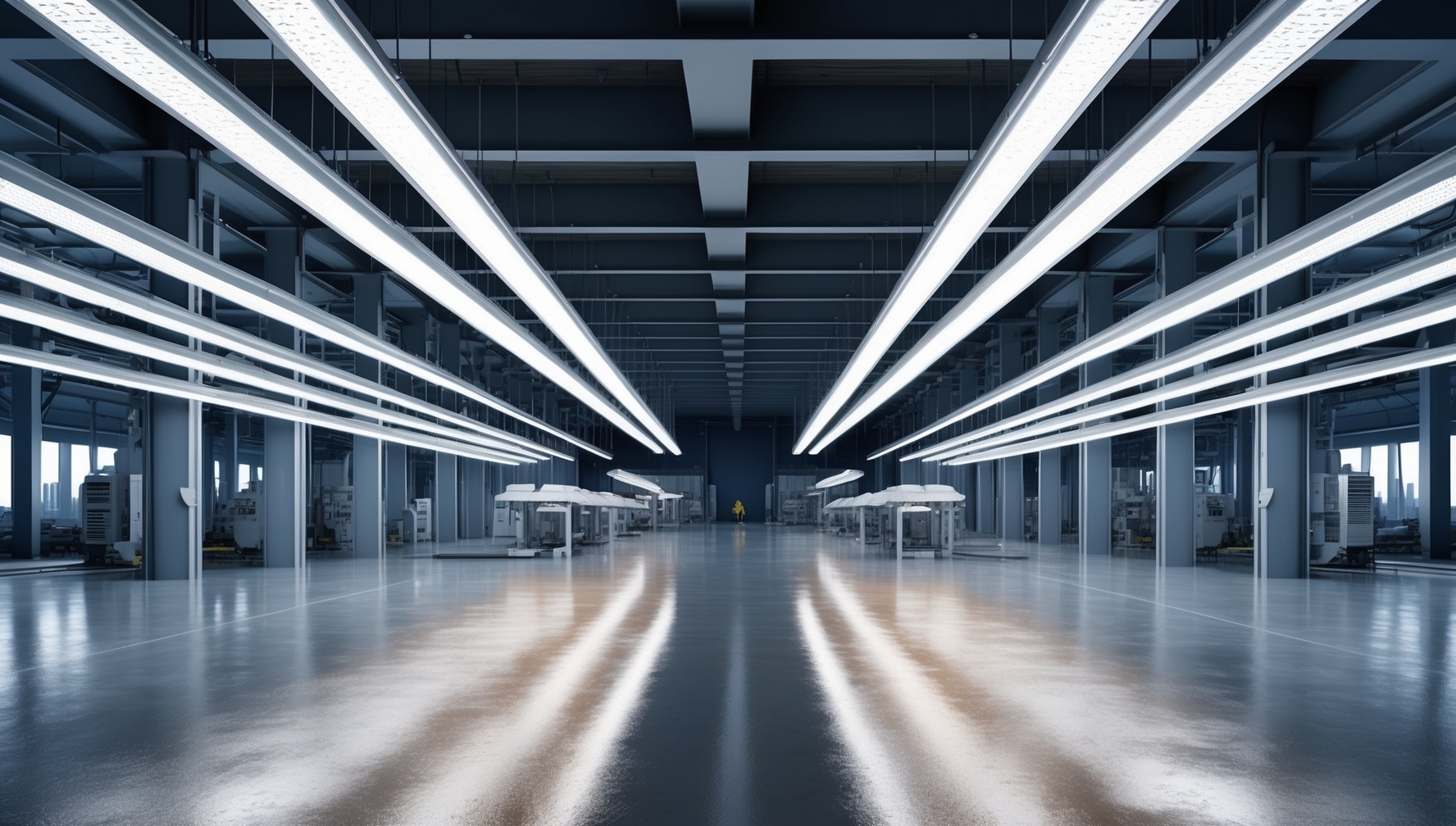In industrial environments, efficient and reliable lighting is crucial for maintaining productivity, safety, and operational efficiency. Traditional lighting solutions often fall short in these demanding settings, but LED lighting offers a powerful alternative. Known for its energy efficiency, durability, and versatility, LED lighting is increasingly being adopted in various industrial applications. This article explores the benefits of LED lighting in industrial settings and provides insights into selecting the right solutions for specific needs.
Energy Efficiency and Cost Savings
One of the most significant advantages of LED lighting in industrial applications is its energy efficiency. Industrial facilities, such as warehouses, factories, and production plants, typically require large amounts of lighting, which can lead to substantial energy consumption. LEDs consume significantly less power than traditional incandescent or fluorescent lighting, reducing energy costs and helping companies achieve substantial savings.
In addition to lower energy bills, LEDs have a longer lifespan, often lasting up to 50,000 hours or more. This longevity reduces the need for frequent replacements, further lowering maintenance costs and minimizing disruptions to operations.
Enhanced Safety and Visibility
Safety is a top priority in industrial settings, and proper lighting plays a critical role in maintaining a safe work environment. LED lights offer superior brightness and clarity compared to traditional lighting, providing better visibility in areas such as assembly lines, inspection stations, and loading docks. Improved visibility reduces the likelihood of accidents and errors, contributing to a safer and more efficient workplace. By offering superior brightness and clarity, LED lights not only reduce accidents but also improve workplace productivity by ensuring that workers can perform tasks more efficiently and accurately.
Moreover, LEDs are more resistant to breakage and emit very little heat, reducing the risk of burns, fires, and other hazards. Their solid-state construction makes them ideal for environments where they may be exposed to vibrations, dust, and moisture, ensuring consistent and reliable performance in even the harshest conditions.
Durability and Resilience
Industrial environments are often tough on equipment, and lighting fixtures are no exception. LED lights are designed to withstand harsh conditions, including extreme temperatures, moisture, and mechanical shocks. Unlike traditional bulbs that may break or fail under such conditions, LEDs continue to perform reliably, making them a durable choice for industrial applications.
This durability translates to fewer replacements and repairs, reducing downtime and associated costs. For industries that operate around the clock, the reliability of LED lighting ensures continuous operations without the interruptions caused by lighting failures.
Versatility and Customization
LED lighting offers unparalleled versatility in industrial applications, with solutions available for a wide range of needs. From high-bay lights for warehouses to task lighting for assembly stations, LEDs can be tailored to suit specific tasks and environments. Many LED systems also offer features like adjustable color temperatures, dimming capabilities, and smart controls, allowing for customized lighting solutions that enhance both efficiency and comfort.
For example, in areas where detailed work is performed, high-intensity LED task lighting can be used to improve precision and reduce eye strain. In contrast, ambient lighting with lower brightness levels can be employed in storage areas to save energy while maintaining adequate visibility.
Environmental Benefits
LED lighting is an environmentally friendly option for industrial applications. Unlike fluorescent lights, LEDs do not contain hazardous materials like mercury, making them easier and safer to dispose of. Their long lifespan also means fewer replacements, reducing waste and the environmental impact associated with manufacturing and disposing of traditional bulbs.
Furthermore, the energy efficiency of LED lighting contributes to lower carbon emissions. By reducing the overall energy consumption of industrial facilities, LEDs help companies meet sustainability goals and comply with environmental regulations.
Integration with Smart Technology
The integration of LED lighting with smart technology offers additional benefits for industrial applications. Smart LED systems can be controlled remotely, allowing for automated adjustments in lighting based on occupancy, time of day, or specific tasks. This not only enhances energy efficiency but also improves convenience and operational flexibility.
For example, motion sensors can be used to automatically turn off lights in unoccupied areas, or lighting levels can be adjusted during different shifts to match the required illumination. These features help optimize energy use and create a more adaptable and responsive lighting system.
Reduced Heat Emission
Traditional lighting sources, such as incandescent and halogen bulbs, emit a significant amount of heat, which can raise ambient temperatures in industrial settings. This can lead to higher cooling costs, especially in temperature-sensitive environments like food processing plants or pharmaceutical facilities. LED lights emit very little heat, helping to maintain a more stable temperature and reduce the load on HVAC systems.
This reduced heat emission also contributes to a more comfortable working environment, which can improve employee productivity and reduce fatigue.
Conclusion: The Future of Industrial Lighting
LED lighting is transforming the industrial sector by providing energy-efficient, durable, and versatile solutions that meet the unique demands of industrial environments. From enhancing safety and visibility to offering significant cost savings and environmental benefits, LED lighting is the future of industrial illumination. As industries look for ways to cut costs and boost efficiency, the cost-effectiveness of LED lighting makes it an indispensable solution for the future.
